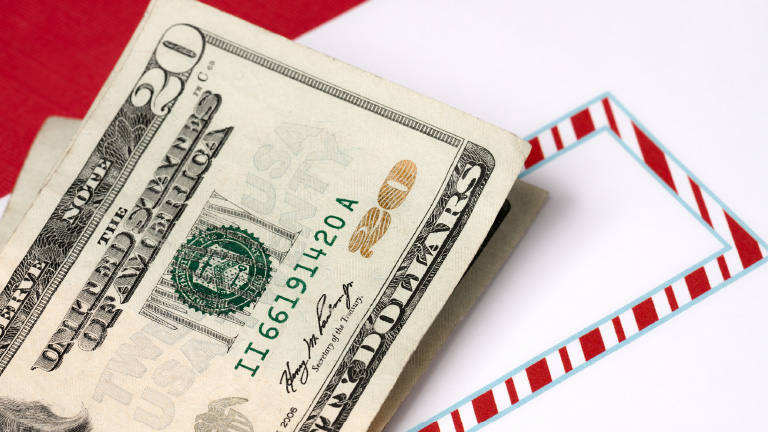Saving money is hard. And there’s a very simple reason for that. It’s a mentally challenging exercise to deprive yourself of indulgences for the sake of a seemingly far off reward — even when you know the results are important. The good news is, there’s a hack for that. Money saving challenges.
Money saving challenges can reframe the way you think about saving responsibly, transforming an activity of restriction and obligation, to one of fun and motivation! “Gamifying” tasks — even those that are difficult or otherwise mundane — is scientifically proven to increase pleasure and drive. Playing games stimulates a natural release of the pleasure hormone dopamine when we achieve smaller steps towards a greater goal. This is why you regularly see folks glued to their phones playing Candy Crush or similarly addictive games.
In order to help you stack up some serious funds, we’ve put together a comprehensive list of money saving challenges to pick from. There are “randomized” challenges for those who enjoy the feeling of serendipity, 52-week challenges for those who really want to get that bang for their buck, light-lifting challenges for those who don’t want to take on too much at once, and every other sort of money saving challenge in between.
Take a look and choose the one that sounds the most manageable and fun to you!
Money Saving Challenges
- 52-Week Challenges
- 365-Day Challenges
- Paycheck and Salary-based Challenges
- Incidental Money Challenges
- Randomized Challenges
- Shorter-term Challenges
- Light-lifting Challenges
- Paring Back Challenges
- Extra Fun Challenges
- Vacation Savings Challenges
- Holiday Gift Challenges
52-Week Money Saving Challenges

This tried-and-true challenge and its offshoots are sure to help you find your way to that year-end nest egg you’re looking to grow.
Classic
The Classic 52-Week Money Saving Challenge involves putting in a corresponding dollar amount for each of the 52 weeks in a year. For example, for week one of the challenge, you’d deposit $1 in savings, for week two, you’d deposit $2, and so on. By the end of one year, you’ll have racked up a healthy $1,378!
Reverse
The Reverse 52-Week Money Saving Challenge is exactly what it sounds like. Instead of starting with a $1 deposit, you start with $52 in your first week and work backwards. If you like the idea of progressing to less and less savings obligations as the year goes on, this could be the challenge for you! And you’ll save exactly what you would with the “Classic:” $1,378.
Double
If you have more disposable income or just want to give yourself more of a challenge, you might try doubling the amount you deposit each week. So week one would have you depositing $2, week two would be $4, etc. All in all, with this challenge you’ll save $2,756 by the end of the year.
Mini
Maybe the “Classic” requires too much money for what you’re reliably able to save up. That’s OK! Take on the Mini 52-Week Challenge. Just halve the amounts you’d save for the Classic version — so $0.50, then $1, then $1.50, and so on. You’ll still save a nice $689 by the end of the year. Nothing to sneeze at!
Randomized
If you like the idea of throwing the dice, put 52 slips of paper in a hat with amounts ranging from 1 to 52, and select at random how much you’ll deposit that week!
Flexible
Maybe your weekly income isn’t always consistent. If that’s the case, try the flexible version of this challenge. Create a chart with amounts from 1 to 52, and simply deposit an amount that’s realistic each week, crossing them off as you go. You’ll save just as much as with the “Classic,” but you’ll be giving yourself some room to compensate for slower weeks.
$20
This challenge makes things real simple. If you don’t feel like keeping track of those incremental amounts, simply deposit $20 (or a set amount of your choosing) weekly. If you opt for the $20 amount, you’ll end up with a cool $1,040 by the end of one year.
365-Day Money Challenges

These challenges are a twist on the 52-week ones, but have you saving daily instead of weekly. If you’re good at following a routine, these challenges could be a good fit for you.
Penny
This is a pretty low-commitment challenge! You only have to deposit a single penny on day one, then incrementally increase your savings amount by a single cent each day (until you reach the final deposit amount of $3.65). It doesn’t seem like a whole lot but if you stick to your schedule, you’ll have saved a total of $667.95 by the end of one year.
Nickel
If you’re interested in saving a bit more, take on the nickel version of this challenge. Day one you’ll save a single nickel, then $0.10, $0.15, up to $18.40 by the time you reach day 365. With the 365-Day Nickel Challenge, you’ll have saved a whopping $3,339.75 by year’s end.
Paycheck and Salary-based Challenges

Basing your savings challenge on how much you’re taking in each year — or simply following the same schedule as your paycheck — can sometimes help make things easier.
26-Week Bi-Weekly
With this challenge, you’re following a similar pattern to the 52-Week Challenge, but instead you’re setting your deposits on a bi-weekly schedule. Save a total of $1,053 by depositing in increasing increments of $3 ($3, $6, $9 … $26) or save $1,404 with increments of $4 ($4, $8, $12 … $104). Any increment you use will work!
Twice Per Month
Maybe you actually get paid twice a month (50 paychecks a year). In this case, use this handy chart to follow a similar increasing deposit pattern as one version of the 26-Week Bi-Weekly challenge that leaves you with $1,378 at the end of the year.
Trim 1% of Your Salary
While the name of this challenge might sound like a drag, in reality, you’re actually giving yourself a 1% salary bonus! This challenge involves calculating 1% of your salary, looking at your budget, and then finding ways to save that amount by the end of the year.
Let’s say your salary is $45,000. 1% of that is $450, so you might limit your streaming subscriptions, start buying generic brands, find a cheaper mobile or internet plan — anything that would add up to that $450.
Incidental Money Challenges

Some people enjoy a less structured, and more whimsical approach to things. If that’s the case for you, one of these chance-driven money saving challenges might be just what the doctor ordered.
$1 Bill
This is a good one if you’re on a tighter budget. Very simply, if you get a $1 bill in change, it goes towards savings! You can do this for any set amount of time — maybe you just try it for a couple of months. Or if you want a bigger stack of cash in the end, do it for a whole year. Just make sure you actually pay with cash frequently enough for this challenge to be worth it.
$5 Bill
You guessed it! This is a variation on the $1 bill challenge using $5 bills instead.
Money Mistake
The Money Mistake Challenge essentially acts as a failsafe for financial missteps. For the span of one year, if you do something silly like paying a bill late (inciting an extra fee) or making an impulse buy, you have to put the same amount you spent on the mistake into savings (or $5 if matching the expense is too much). This is a win-win! If you made some “mistakes” here and there, you’ll have a nice sum on the side and an awareness of something you might want to address in the future. And if you didn’t save anything, that means you were financially savvy!
Tax Your Vices
This one also does double-duty — incentivizes kicking bad habits and adds to your savings when and if you do indulge. Your “vice” could be anything you define as an unhealthy or unsavory habit. This could mean putting a dollar in a swear jar every time you let an expletive slip, or allocating a dollar to savings every time you buy an expensive coffee.
Randomized Challenges

These money saving challenges are similar to the “incidental” ones in the sense that they don’t set a specific savings goal and they rely on some level of chance. However, with this group, it depends not on your behavior, but on true serendipity.
Weather Wednesdays
A clever blogger came up with this fortuitous challenge. For any given period, every Wednesday, you’ll deposit an amount that matches the high temperature that day. If you live in a warm climate year-round, you could save upwards of $3,000 in a year! If you want to make this a short term challenge, pick a season appropriate for your means (winter for less income at your disposal, summer for more).
Roll the Dice
The basic version of this money saving challenge is that you roll a die each day and tuck away the amount on the die in dollars. Probabilities being what they are, this challenge will help you save well over $1,000 in a year. Feel free to create variations where you roll two dice for more savings, or only roll once a week for a lower commitment. If you like the idea of an actual gameboard, pay $3 to download the colorful Stackopoly game, another version of this fun challenge.
100 Envelope Challenge
This is a challenge for folks with a little more cash flow. You’ll number a hundred envelopes from 1 to 100, mix them up, and pick one at random each day. Whatever number you get, you must either insert that amount of cash, or deposit that amount in savings. Just make sure if you are using cash, to deposit it at least every month so that it’s safe in the bank and accruing interest. In just over three months, you’ll have saved an impressive $5,050. If every day is a tad much for you, you can also make this a twice weekly challenge. You’ll have saved this amount just before a full year completes!
Shorter-term Challenges

Many of the money saving challenges we’ve listed are designed to be completed over the span of a year. But there’s nothing that says you can’t adjust each challenge to be shorter-term! Alternatively, you can pick one of the challenges below that’s designed to be finished in less time.
6-Month
This challenge will have you saving $1,378 in half a year! In your first week, save $3, then go up by increments of $4. Your last deposit will be $103. Or if you like, start with $103, and decrease the amount each week!
3-Month
This low-commitment challenge simply requires an $84 deposit each week. Seems easy, but you’ll be up $1,000 by the time the three months are up.
12-Week
This challenge is similar to the previous 3-Month one, but keeps things dynamic with an increasing deposit amount. Start with $10, and increase by another $10 each week. Your final deposit will end at $120, and you’ll have saved $780 by the end.
Pantry
You likely already have untapped value right in your kitchen! Challenge yourself to “clean out” your pantry, fridge, and freezer by consuming everything in there before eating out or doing another major grocery shop. You might allow yourself to buy a couple things like fresh produce and protein to round out the meals, but it’s possible you already have those things frozen.
33.3
Geared towards folks with a bit more disposable income, the 33.3 Challenge lasts only a month and offers a hefty $999.90 as its final savings tally. Just deposit $33.33 every day. That’s it. And if you decide to do a month with 31 days, you’ll sail past the thousand dollar line to reach $1,032.30.
30-Day Meal Plan
For 30 days, build your diet around meals that you or your significant other prepare yourselves. Not only will you save by not eating out (an expensive habit), your grocery bill will go down because to some degree, you’re buying in bulk (i.e. a whole chicken for multiple meals), and potentially freezing a lot of expirable ingredients. Try these ideas for more grocery savings.
Cash Only For a Month
This one’s just what it sounds like — you’ll only use cash for a month. Psychologically, using cash to pay for things makes you a lot more aware of how much you’re spending. Paying with a card does the opposite by allowing you to hand the piece of plastic over and hardly look at the actual charge. Try this challenge to not only save, but give yourself some good financial awareness.
31 Days to Improve Your Financial Life
If you’re game for a real month-long project that’ll turn your financial life around for the better, take on this little diddy. Specially designed by personal finance blogger Phillip Taylor, the 31 Days to Improve Your Finance Life Challenge will have you doing daily activities like adjusting your 401(k), figuring out what assets you have, and reducing your interest rates. This one is a real game changer.
Light-lifting Challenges

Don’t have much time on your hands? Try one of these money saving challenges for which you’ll hardly have to lift a finger.
Round Up
Many banks have a new option that allows you to round up to the nearest dollar on your purchases, with the “remainder” amount going straight into savings. For example, if you purchased a coffee for $3.12, your credit card would be charged $4 — $3.12 for the coffee and $0.88 towards savings. If your bank doesn’t offer this, apps like Acorns will take care of it for you!
Dollar
The Dollar Challenge only requires you to save one single solitary dollar each day. Deposit it, or put it in a hidden jar — wherever you feel the money is safest. This’ll net you $365 by the end of the year — not a huge windfall, but you’ll have built a great savings habit. And hey, $365 is not nothing after all!
1%
Simple. Up your 401(k) contribution by 1%. In two months, raise it again by another 1%. If you want to save for the more immediate future, just replicate this outside of a 401(k): set up an automatic transfer of 1% of your gross income into a special savings account each time you get paid.
Paring Back Challenges

If you feel like there are places you could afford to cut back on spending but you don’t know where to start, take a whack at one of these babies.
Kick a Bad Habit
Have a “bad” habit you wish you could leave behind? Smoking, drinking soda, buying expensive coffee, or the like? Well maybe instead of saying you’ll never have a single expensive coffee ever again, challenge yourself to set these purchases aside for just a month. It’ll feel a heck of a lot more achievable, and you’ll be saving whatever you would have spent on the expense. And who knows! By the time you hit the end of the month, you may not feel the need for that thing anymore.
Expense Tracking
More than a concrete savings goal, this challenge targets an awareness of where all your expenses are going. You’ll pick a period (1-3 months) during which you’ll track all your expenses and categorize them. You can use paper and pen or an app like Mint. Essentially, you’re looking for places where you might be able to cut down on superficial or extraneous purchases.
No Spend
It’s really up to you how long you take this challenge on for. It can be one day, one day each week, or a whole month. The idea here is to cut out discretionary spending for the period you land on. You may still have to pay for transit and other basic needs, but when it comes to extra snacks, clothes, or anything else that isn’t totally necessary, you’ll let those things go. If you like, you can make a note of each point where you neglect to make a purchase you wouldn’t have otherwise, and put that money directly into savings. As an extra bonus, you may even end up enjoying the creative problem-solving you’ll have to do during these times!
No Eating Out
According to the Bureau of Labor Statistics, the average American household spends $2,375 eating out in a single year. If you or your family are the types to forego a home-cooked meal for takeout, delivery, or a dine-in experience, you could really save a lot of money by taking on the No Eating Out Challenge. Very simply, give up restaurant and takeout food for 30 days. You’ll be gobsmacked at the amount you save just by preparing your own food.
Cancellation
How many subscriptions do you currently have? If you’re not sure, it may be time to take on the Cancellation Challenge. It’s all about itemizing your subscriptions (streaming services, monthly app charges, etc.), and cancelling as many as you can.

PRO TIP:
If you’re a streaming junky, try just subscribing to one content subscription at a time. Once you’ve blazed through the Hulu shows that appeal to you, cancel that and join Netflix!
Coffee Break
Do you buy a coffee every day from Starbucks or another pricey coffee shop? Business Insider calculated that someone who buys a single $5 coffee daily spends $1,200 a year, while brewing at home would cost $45 in that same year. Even if you challenge yourself to make your own coffee for only one month, you’d be saving a sweet hundo and still getting that caffeine hit you so desperately need. You may want to deposit the amount you’d be saving on your speciality coffee straight into your savings! So if your favorite latte is $2.75, each time you make your own cup of joe, set that amount aside for the future.
No Soda or Alcohol
Maybe coffee isn’t your bag, but you order a beer every day after work. Or maybe neither of those things strike your fancy, but you always get a big old Coke for lunch. Challenge yourself to cut that particular beverage out of the budget for just one month. These things add up, and you may be surprised at how much you actually save. To keep motivated, download or draw out a chart like this one.
No New Clothes
This challenge may be tough for folks who enjoy retail therapy, but it’s actually designed for exactly this type of person. Most of us have more than enough clothes to keep us warm throughout the year, but we may feel inclined to spice up the wardrobe more than is really necessary. If this sounds like you, challenge yourself not to buy new garb for one whole year. You may want to check out how much you spent on your attire the previous year, divide by 12, and put that amount into savings each month.
Switch Services
Talking to customer service reps is rarely fun, but this challenge could help you save for an indefinite period by doing a simple one-time chore. Call your mobile, electric, gas, internet, and cable providers to see if they can offer you a customer discount. Especially if you’re a loyal, long-time customer, they may be able to shave some cost off your monthly bill. If they say no, call around to see if another provider can offer you those savings.
Save Money at a Different Grocery Store
If you find that your grocery bill seems inordinately large, try shopping at a discount grocery store. Replicate your last shopping trip’s receipt at this new store (making sure you’re getting the same amount of each item), and compare prices. You may decide this is a change you want to make permanent.
Hobby Swap
Do you have a pricey hobby? Golfing, rock climbing — even woodworking can get expensive. If you’ve found yourself spending a pretty penny on your pastime, challenge yourself to pick up a less expensive — or even free — hobby for a month, setting aside your costly one. Things like hiking, journaling, drawing, and volunteering at an animal shelter can be incredibly fulfilling, but will keep your wallet from leaving your pocket too often (or at all).
No Car
Gas — especially when the political and economic climates turn against us — can be incredibly pricey. The No Car Challenge dares you to get around for at least one month with car alternatives: bike, train, bus, or even carpooling. If you do have to use your car, plan out your trips so that you get all your chores done in one fell swoop so that you’re still using it minimally. This challenge is best for people who live in areas with good public transportation infrastructure.
Extra Fun Challenges

If you feel like you need a tiny bit more motivation, try one of these challenges that’ll add a little extra oomph.
Money Throwdown
Some people thrive on competition. If that’s you, challenge a friend or family member to the Money Throwdown Challenge. You can decide on the rules together, but you might try to be the one to save $1,000 the fastest or alternatively, save the most in some set amount of time.
Bowl Grab
This is a fun one to do with your significant other, or potentially the whole family! Write out different cash denominations on slips of paper (i.e. $1, $5, $10, $20), and put 30 of them in a bowl. Take turns picking out a slip each day, and whatever dollar amount you get, you have to put that amount in savings. By the end, you’ll have collectively saved around $282 in one month (if you put in roughly equal amounts of each denomination on the slips).
Savings Fever
If you’re the creative type, you might enjoy creating a DIY Savings Fever chart. Draw a large thermometer on a posterboard, adding your savings goal on top and inserting smaller savings goals in intervals along the thermometer. As you save, fill in the thermometer with marker colors that go from cool, to warm, to hot, hot, hot!
Monthly Money Challenge
Feeling ambitious? Try the Monthly Money Challenge! This one involves picking twelve — yes, twelve! — money saving challenges, and completing one per month. If you’re worried you’ll get bored by one full-year challenge, this puppy will help you avoid the drudgery with an ever-changing savings dynamic. You should have plenty to pick from on this very list!
Vacation Saving Challenges

If you’re specifically looking to save for a spectacular trip, try one of these money saving challenges!
Straightforward
One year before your vacation, plan out how much you’ll be spending on the entire trip. Divide by 12, and make sure you’re setting aside that amount each month for your great adventure.
8-Week
If you’re coming down to the wire and need to save quickly, try The Soccer Mom Blog’s 8-Week Vacation Savings Challenge. Her specially-designed plan involves making specific deposit amounts each week, cutting down on eating out, and paring back on expensive coffees for a total savings of $1,000.
Holiday Gift Challenges

Some people get incredible joy from giving gifts during the holidays. If this sounds like you, don’t punish yourself for indulging in this magnanimous undertaking — just start saving early with one of these money saving challenges!
Holiday Helper
Easy peasy. Starting the first of the new year, set aside $20 a week towards holiday gifts. By the time December rolls around, you’ll have stocked up $960 to spend on lavish presents, decorations, turkey — whatever your generous heart desires!
Interest-bearing Holiday Savings
Did you know that many credit unions have holiday interest-bearing savings accounts? Decide how much you’d like to save at the start of the year, divide by 52, and add that amount to this account each week!
Final Words
Picking a money saving challenge is highly individual. What might work for one saver could frustrate another and cause them to give up the pursuit altogether. Really ask yourself which of these challenges will motivate you to set money aside and keep you moving in the right direction.
Still worried you might not follow the program? Don’t give up hope. There are little tricks to help you go the extra motivational mile! Try using a chart to accompany your challenge as a visual symbol for progress. There are many free downloads of these challenges on the internet or you can make your own! Another thing you could do is ask a friend or family member to keep you accountable when it comes to sticking to your savings goals.
Whatever challenge you pick, pat yourself on the back for looking out for your financial future and building good habits that will continue to pay huge dividends in the long run.
